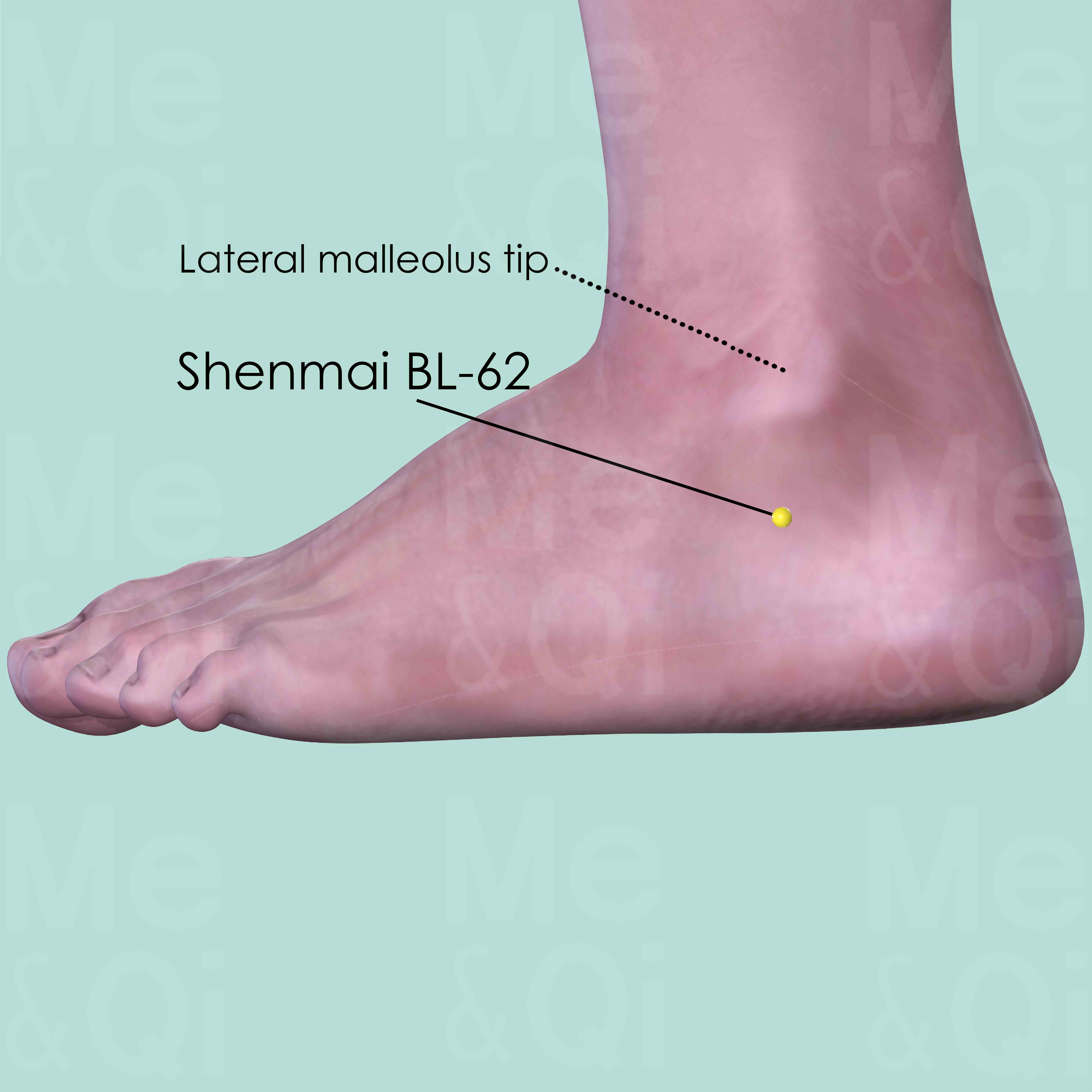Occipital Stiffnessaccording to TCM
Symptom families: Neurological Disorders, Neuralgias and Neuropathies, Back and Neck Stiffness and Discomfort
Did you mean? Stiff Neck
What is Occipital Stiffness?
Occipital stiffness, a common symptom, refers to the stiffness or tightness experienced in the back of the head. This condition, often linked with Occipital neuralgia, can lead to discomfort and limited mobility in the affected area. Understanding this symptom is essential for effective treatment and management.
How does TCM View Occipital Stiffness?
Traditional Chinese Medicine (TCM) perceives occipital rigidity through the lens of energy imbalances and disharmony within the body. TCM suggests that such symptoms are not isolated issues but reflections of deeper imbalances in the body's Qi (energy), Yin and Yang. Identifying and treating the underlying disharmony is crucial in TCM's approach to alleviating occipital rigidity.
Root Causes of Occipital Stiffness in TCM
In TCM, occipital stiffness is often attributed to external factors like Damp-Wind and Wind-Cold. These patterns describe the invasion of external pathogenic factors, leading to symptoms like stiffness, fever, and pain.
The Damp-Wind pattern, for instance, can cause symptoms like body pain and muscle aches, while Wind-Cold often leads to sneezing, nasal discharge, and headaches. Understanding these patterns helps in tailoring an effective TCM treatment strategy.
Explore below more details about what might cause Occipital stiffness according to TCM.
- By Syndrome
- Wind
- Dampness
- Cold
- Heat
- View More Causes
Wind
In TCM "Wind" is a concept that represents a pattern of disharmony, often characterized by its sudden and unpredictable nature, much like a gusty wind changing direction without warning. This pattern is associated with symptoms that come and go quickly or move around the body, such as itching, tremors, or even certain types of pain. Wind is considered to be a primary cause of illnesses that have these rapidly changing characteristics. In TCM, external Wind often refers to illnesses that start suddenly, like the common cold, believed to be caused by external pathogenic factors like climatic changes. On the other hand, internal Wind can be linked to internal imbalances and can manifest in conditions like dizziness or spasms. ... see more
Wind Patterns That Can Lead to Occipital Stiffness
Common Symptoms: Aversion To Cold Fever Perspiration Body Pain Sneezing Coughing Nasal Discharge Occipital Headache
| Pattern Name | Relevant Symptoms | Relevant Formulas |
|---|---|---|
| Damp-Wind | Occipital stiffness, Aversion to cold, Fever, Neck gland swelling, Nausea, Perspiration, Body pain, Muscle pain, Feeling of heaviness, Swollen joints... see more | Qiang Huo Sheng Shi Tang | Jiu Wei Qiang Huo Tang | Cang Er Zi San | Xiao Feng San | Ku Shen Tang | Hai Tong Pi Tang |
| Wind-Cold | Occipital stiffness, Aversion to cold, Fever, Sneezing, Coughing, Nasal discharge, Occipital headache, Congested nose, White and watery sputum... see more | Jiu Wei Qiang Huo Tang | Jing Fang Bai Du San | Cong Chi Tang | Huo Ren Cong Shi Tang | Ma Huang Tang | Jia Wei Xiang Su San | Shi Shen Tang | Jin Fei Cao San | Wu Ji San |
| Wind-Heat | Occipital stiffness, Aversion to cold, Fever, Sneezing, Coughing, Nasal discharge, Occipital headache, Perspiration, Sore throat, Yellowish phlegm... see more | Xiao Feng San | Cong Chi Tang | Huo Ren Cong Shi Tang | Yin Qiao San | Sang Ju Yin | Jing Jie Lian Qiao Tang | Zhu Ye Cheng Liu Tang | Fang Feng Tong Sheng San | Bing Peng San | Pu Ji Xiao Du Yin |
Dampness
"Dampness" in TCM is a concept that describes a pattern of disharmony where the body accumulates excess moisture. Imagine the heavy, sticky feeling you get on a very humid day; that's similar to what dampness feels like internally. It can manifest as a sense of heaviness, bloating, sluggishness, or even a foggy mind. This condition is often thought to arise from environmental factors like living in a damp place, dietary habits that promote moisture in the body, or internal imbalances that hinder the body's ability to process fluids properly. In TCM, dampness can obstruct the normal flow of energy and fluids in the body, leading to various symptoms.... see more
Dampness Patterns That Can Lead to Occipital Stiffness
| Pattern Name | Relevant Symptoms | Relevant Formulas |
|---|---|---|
| Damp-Wind | Occipital stiffness, Aversion to cold, Fever, Neck gland swelling, Nausea, Perspiration, Body pain, Muscle pain, Feeling of heaviness, Swollen joints... see more | Qiang Huo Sheng Shi Tang | Jiu Wei Qiang Huo Tang | Cang Er Zi San | Xiao Feng San | Ku Shen Tang | Hai Tong Pi Tang |
Cold
In TCM "Cold" as a pattern of disharmony refers to a specific type of imbalance within the body's systems, often linked to a deficiency or weakness. It's not about feeling physically cold or having a common cold, but rather a metaphorical description of certain symptoms and underlying conditions. When a TCM practitioner says someone suffers from "Cold," it usually implies that the body's Yang energy, which is warm and active, is insufficient or overpowered by Yin energy, which is cool and passive. Symptoms of Cold in TCM can include a general feeling of coldness, cold limbs, pale complexion, low energy, slow metabolism, and a preference for warmth. ... see more
Cold Patterns That Can Lead to Occipital Stiffness
| Pattern Name | Relevant Symptoms | Relevant Formulas |
|---|---|---|
| Wind-Cold | Occipital stiffness, Aversion to cold, Fever, Sneezing, Coughing, Nasal discharge, Occipital headache, Congested nose, White and watery sputum... see more | Jiu Wei Qiang Huo Tang | Jing Fang Bai Du San | Cong Chi Tang | Huo Ren Cong Shi Tang | Ma Huang Tang | Jia Wei Xiang Su San | Shi Shen Tang | Jin Fei Cao San | Wu Ji San |
Heat
In TCM "Heat" signifies an excess of Yang energy, leading to an imbalance where heat predominates over the body's cool Yin aspects. This condition is metaphorically akin to an internal over-heating. Symptoms indicative of Heat can include feelings of warmth, fever, sweating, irritability, red face, thirst with a preference for cold drinks, and a rapid pulse. The tongue may appear red with a yellow coating. Unlike the common interpretation of heat in terms of temperature, in TCM, it represents a state of hyperactivity or inflammation in the body.... see more
Heat Patterns That Can Lead to Occipital Stiffness
| Pattern Name | Relevant Symptoms | Relevant Formulas |
|---|---|---|
| Wind-Heat | Occipital stiffness, Aversion to cold, Fever, Sneezing, Coughing, Nasal discharge, Occipital headache, Perspiration, Sore throat, Yellowish phlegm... see more | Xiao Feng San | Cong Chi Tang | Huo Ren Cong Shi Tang | Yin Qiao San | Sang Ju Yin | Jing Jie Lian Qiao Tang | Zhu Ye Cheng Liu Tang | Fang Feng Tong Sheng San | Bing Peng San | Pu Ji Xiao Du Yin |
TCM Herbal Formulas for Occipital Stiffness
TCM recommends specific formulas to address the patterns causing occipital stiffness.
For Damp-Wind patterns, Qiang Huo Sheng Shi Tang, which includes Notopterygium Roots (Qiang Huo), is commonly prescribed. This formula aims to dispel the Wind-Damp factors causing the stiffness.
For Wind-Cold patterns, Jiu Wei Qiang Huo Tang is suggested, leveraging the warming and exterior-releasing properties of its key ingredients. These herbal formulations are central to TCM's holistic approach in treating occipital rigidity.
Explore below some TCM herbal formulas used to address occipital stiffness, organized by cause and by formula type.
- By Cause
- By Formula Type
- Wind
- Dampness
- Cold
- Heat
- View More Causes
- Formulas that clear wind-Cold
- External formulas for external disorders
- Formulas that clear wind-Heat
- Formulas that dredge and disperse external wind
- Formulas that clear early-stage exterior disorders
- Formulas that dispel wind-Damp
- Formulas that release the exterior and warm the interior
- Formulas that release the exterior and purge the interior
- Formulas that clear heat and resolve toxicity
Top Formula for Wind:
Jiu Wei Qiang Huo Tang
Suitable for Wind patterns that may cause occipital stiffness, such as Damp-Wind or Wind-Cold
Learn moreAll Formulas Recommended for Occipital Stiffness Caused by Wind
| Formula | Patterns Suitable For |
|---|---|
| Jiu Wei Qiang Huo Tang | Damp-Wind, Wind-Cold |
| Xiao Feng San | Damp-Wind, Wind-Heat |
| Cong Chi Tang | Wind-Cold, Wind-Heat |
| Huo Ren Cong Shi Tang | Wind-Cold, Wind-Heat |
| Qiang Huo Sheng Shi Tang | Damp-Wind |
| Cang Er Zi San | Damp-Wind |
| Ku Shen Tang | Damp-Wind |
| Hai Tong Pi Tang | Damp-Wind |
| Jing Fang Bai Du San | Wind-Cold |
| Ma Huang Tang | Wind-Cold |
| Jia Wei Xiang Su San | Wind-Cold |
| Shi Shen Tang | Wind-Cold |
| Jin Fei Cao San | Wind-Cold |
| Wu Ji San | Wind-Cold |
| Yin Qiao San | Wind-Heat |
| Sang Ju Yin | Wind-Heat |
| Jing Jie Lian Qiao Tang | Wind-Heat |
| Zhu Ye Cheng Liu Tang | Wind-Heat |
| Fang Feng Tong Sheng San | Wind-Heat |
| Bing Peng San | Wind-Heat |
| Pu Ji Xiao Du Yin | Wind-Heat |
Top Formula for Dampness:
Jiu Wei Qiang Huo Tang
Suitable for Dampness patterns that may cause occipital stiffness, such as Damp-Wind
Learn moreAll Formulas Recommended for Occipital Stiffness Caused by Dampness
| Formula | Patterns Suitable For |
|---|---|
| Jiu Wei Qiang Huo Tang | Damp-Wind |
| Xiao Feng San | Damp-Wind |
| Qiang Huo Sheng Shi Tang | Damp-Wind |
| Cang Er Zi San | Damp-Wind |
| Ku Shen Tang | Damp-Wind |
| Hai Tong Pi Tang | Damp-Wind |
Top Formula for Cold:
Jiu Wei Qiang Huo Tang
Suitable for Cold patterns that may cause occipital stiffness, such as Wind-Cold
Learn moreAll Formulas Recommended for Occipital Stiffness Caused by Cold
| Formula | Patterns Suitable For |
|---|---|
| Jiu Wei Qiang Huo Tang | Wind-Cold |
| Cong Chi Tang | Wind-Cold |
| Huo Ren Cong Shi Tang | Wind-Cold |
| Jing Fang Bai Du San | Wind-Cold |
| Ma Huang Tang | Wind-Cold |
| Jia Wei Xiang Su San | Wind-Cold |
| Shi Shen Tang | Wind-Cold |
| Jin Fei Cao San | Wind-Cold |
| Wu Ji San | Wind-Cold |
Top Formula for Heat:
Xiao Feng San
Suitable for Heat patterns that may cause occipital stiffness, such as Wind-Heat
Learn moreAll Formulas Recommended for Occipital Stiffness Caused by Heat
| Formula | Patterns Suitable For |
|---|---|
| Xiao Feng San | Wind-Heat |
| Cong Chi Tang | Wind-Heat |
| Huo Ren Cong Shi Tang | Wind-Heat |
| Yin Qiao San | Wind-Heat |
| Sang Ju Yin | Wind-Heat |
| Jing Jie Lian Qiao Tang | Wind-Heat |
| Zhu Ye Cheng Liu Tang | Wind-Heat |
| Fang Feng Tong Sheng San | Wind-Heat |
| Bing Peng San | Wind-Heat |
| Pu Ji Xiao Du Yin | Wind-Heat |
External formulas for External disorders
These formulas are suitable for some occipital stiffness-causing patterns like Damp-Wind.
One such formula is Ku Shen Tang, with sophora root as a key herb.
Other formulas of this category are listed in the table below.
All "external formulas for external disorders" recommended for occipital stiffness
| Formula | Patterns Suitable For (if applicable) |
|---|---|
| Ku Shen Tang | Damp-Wind |
| Hai Tong Pi Tang | Damp-Wind |
| Jing Fang Bai Du San | Wind-Cold |
| Yin Qiao San | Wind-Heat |
| Bing Peng San | Wind-Heat |
Formulas that clear Wind-Cold
These formulas are suitable for some occipital stiffness-causing patterns like Damp-Wind or Wind-Cold.
One such formula is Jiu Wei Qiang Huo Tang, with notopterygium root as a key herb.
Other formulas of this category are listed in the table below.
All "formulas that clear wind-Cold" recommended for occipital stiffness
| Formula | Patterns Suitable For (if applicable) |
|---|---|
| Jiu Wei Qiang Huo Tang | Damp-Wind, Wind-Cold |
| Ma Huang Tang | Wind-Cold |
| Jia Wei Xiang Su San | Wind-Cold |
| Shi Shen Tang | Wind-Cold |
| Jin Fei Cao San | Wind-Cold |
Formulas that dredge and disperse External Wind
These formulas are suitable for some occipital stiffness-causing patterns like Damp-Wind or Wind-Heat.
One such formula is Xiao Feng San, with japanese catnip as a key herb.
Other formulas of this category are listed in the table below.
All "formulas that dredge and disperse external wind" recommended for occipital stiffness
| Formula | Patterns Suitable For (if applicable) |
|---|---|
| Xiao Feng San | Damp-Wind, Wind-Heat |
| Cang Er Zi San | Damp-Wind |
Formulas that clear early-stage Exterior disorders
These formulas are suitable for some occipital stiffness-causing patterns like Wind-Cold or Wind-Heat.
One such formula is Cong Chi Tang, with scallions as a key herb.
Other formulas of this category are listed in the table below.
All "formulas that clear early-stage exterior disorders" recommended for occipital stiffness
| Formula | Patterns Suitable For (if applicable) |
|---|---|
| Cong Chi Tang | Wind-Cold, Wind-Heat |
| Huo Ren Cong Shi Tang | Wind-Cold, Wind-Heat |
Formulas that clear Wind-Heat
These formulas are suitable for some occipital stiffness-causing patterns like Wind-Heat.
One such formula is Sang Ju Yin, with mulberry leaves as a key herb.
Other formulas of this category are listed in the table below.
All "formulas that clear wind-Heat" recommended for occipital stiffness
| Formula | Patterns Suitable For (if applicable) |
|---|---|
| Sang Ju Yin | Wind-Heat |
| Jing Jie Lian Qiao Tang | Wind-Heat |
| Zhu Ye Cheng Liu Tang | Wind-Heat |
Formulas that dispel Wind-Damp
These formulas are suitable for some occipital stiffness-causing patterns like Damp-Wind.
One such formula is Qiang Huo Sheng Shi Tang, with notopterygium root as a key herb.
Formulas that release the Exterior and purge the Interior
These formulas are suitable for some occipital stiffness-causing patterns like Wind-Heat.
One such formula is Fang Feng Tong Sheng San, with saposhnikovia root as a key herb.
Formulas that clear Heat and resolve toxicity
These formulas are suitable for some occipital stiffness-causing patterns like Wind-Heat.
One such formula is Pu Ji Xiao Du Yin, with baikal skullcap root as a key herb.
Acupoints for Occipital Stiffness
TCM also utilizes acupuncture for treating occipital rigidity, targeting specific points like Dazhui DU-14 and Fengfu DU-16 along the Governing Vessel. These points are known for their effectiveness in clearing Wind-Heat and calming the Mind.
Additionally, points like Shenmai BL-62 and Shugu BL-65 on the Bladder Channel, and Fengchi GB-20 on the Gall Bladder Channel, are also used. These acupoints help in removing channel obstructions, easing pain, and addressing the root causes of occipital rigidity.
Explore below some acupoints used to address occipital stiffness, organized by meridian.
- By Meridian
- Governing Vessel
- Bladder Channel
- Gall Bladder Channel
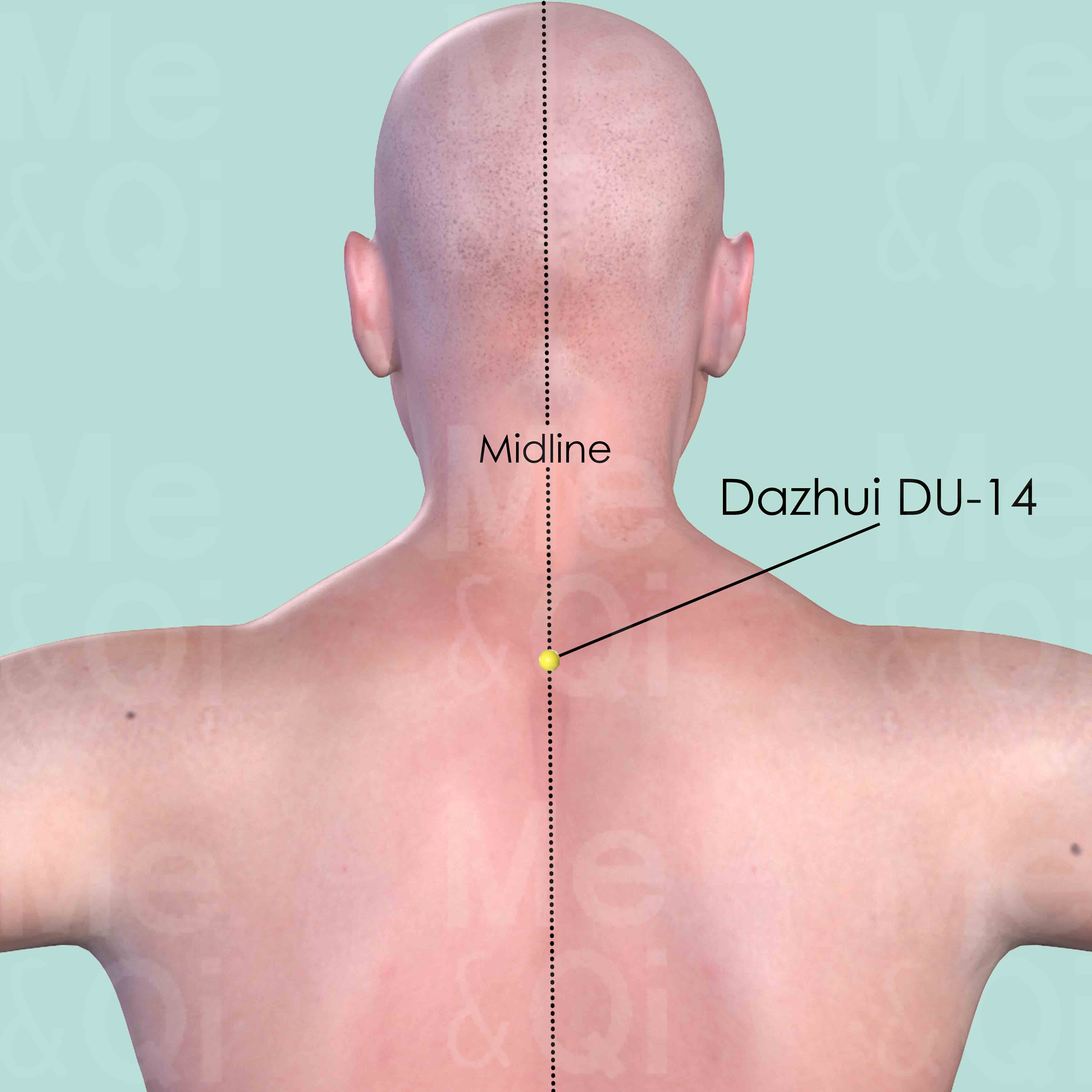
Dazhui DU-14
On the midline at the base of the neck, in the depression below the spinous process of the seventh cervical vertebra (C7).
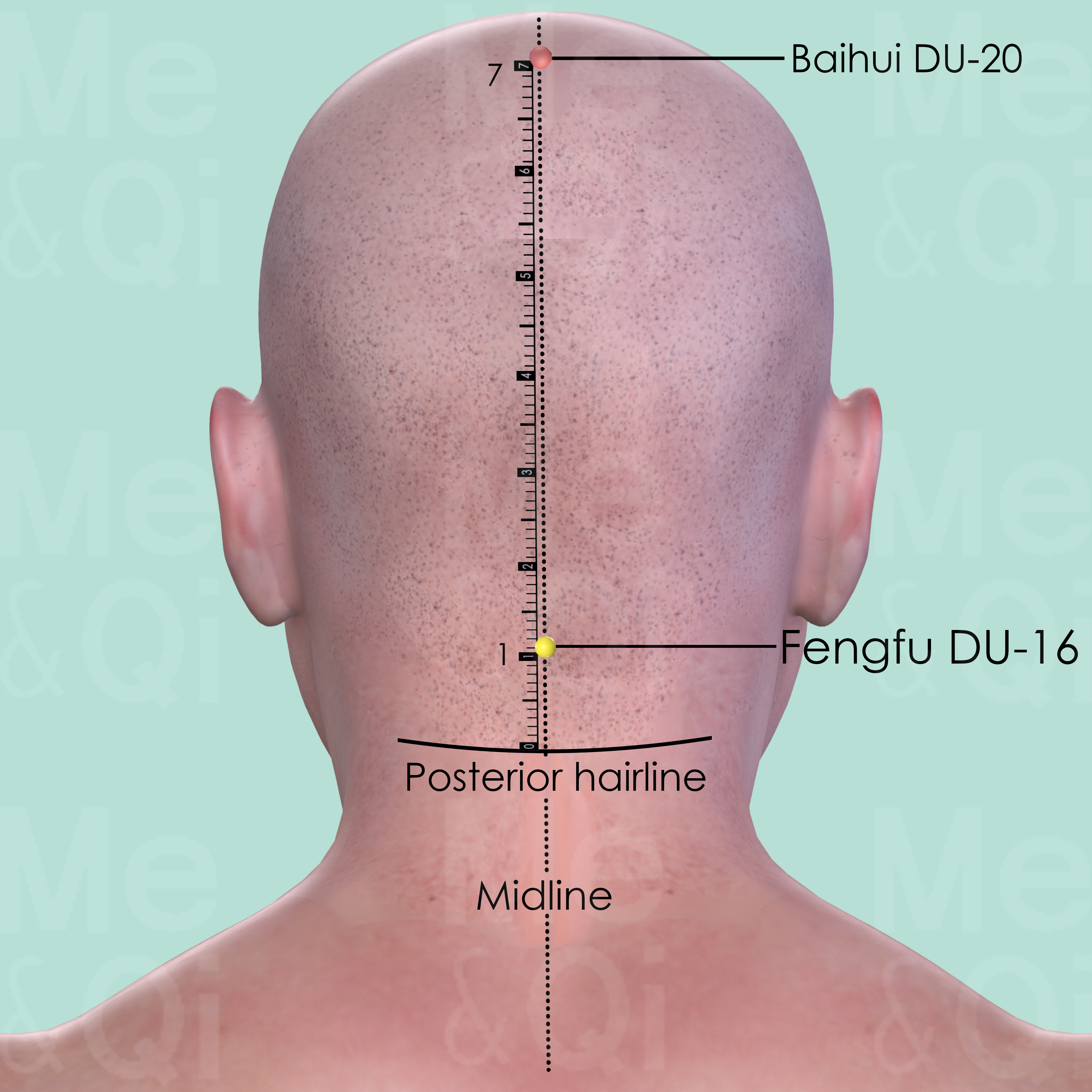
Fengfu DU-16
Directly below the external occipital protuberance, in the depression between the origins of the trapezius muscle.
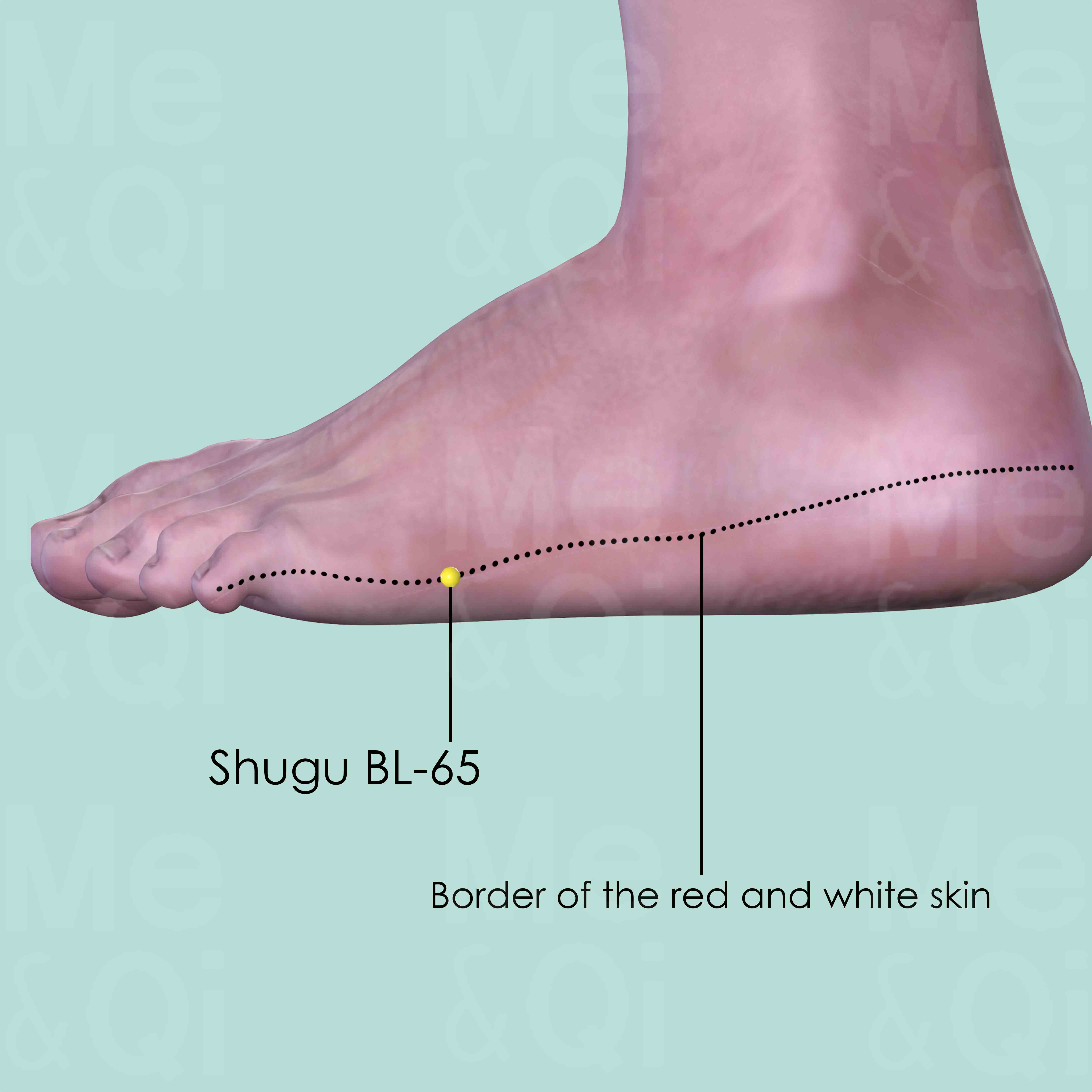
Shugu BL-65
On the lateral side of the foot dorsum, proximal to the head of the 5th metatarsal bone, at the border of the red and white skin.
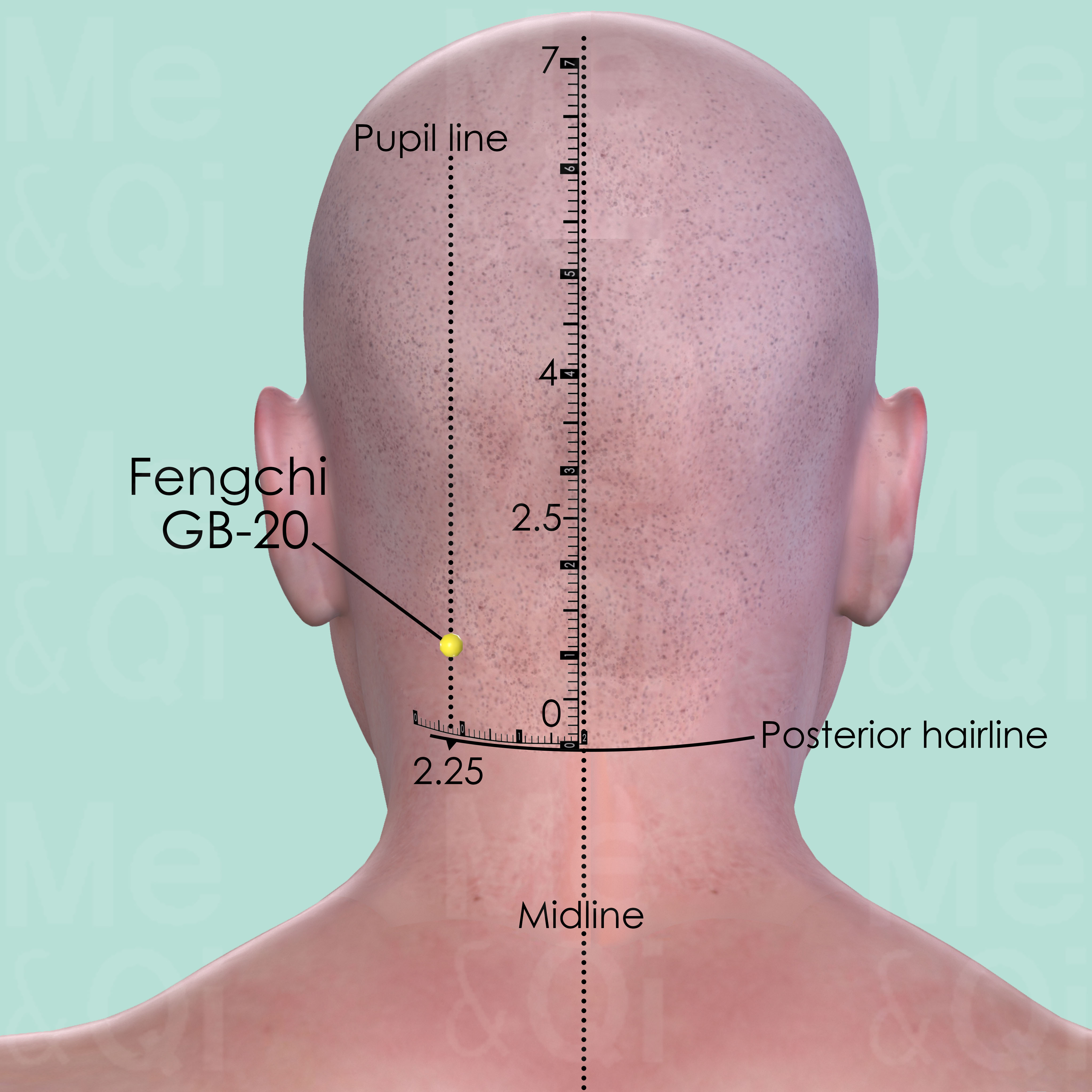
Fengchi GB-20
In the posterior aspect of the neck, below the occipital bone, in the depression between the upper portion of sternocleidomastoid and trapezius muscle.

